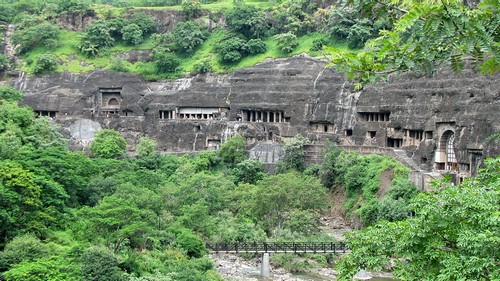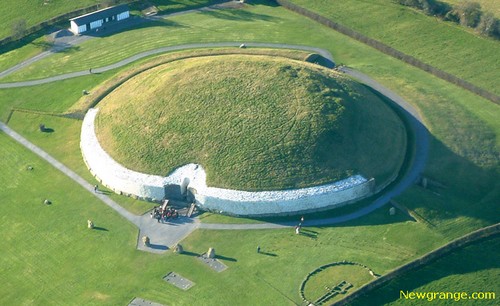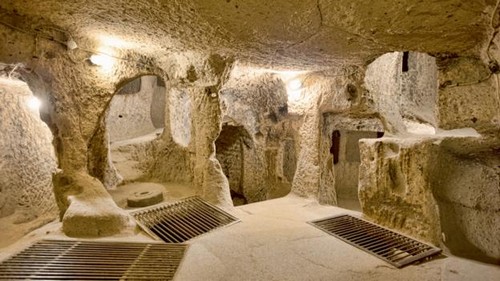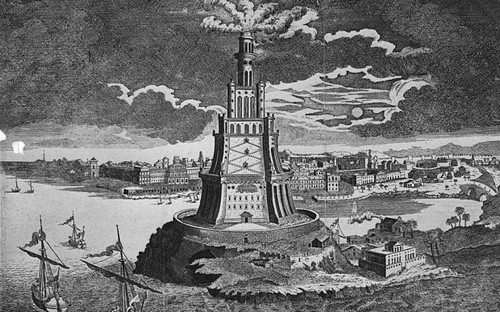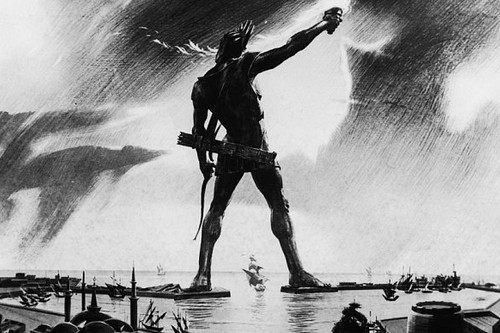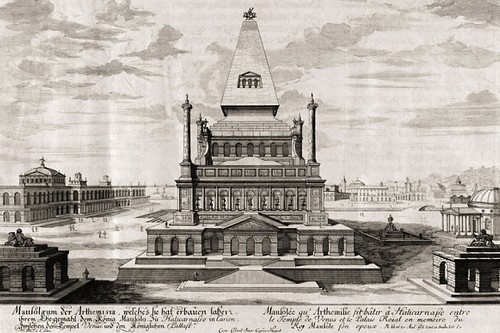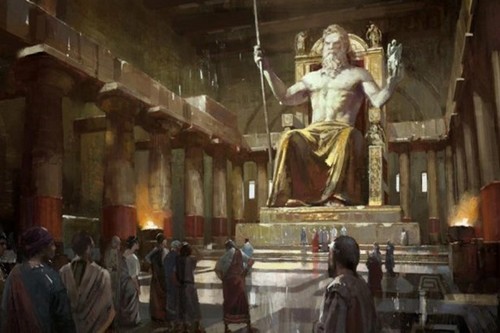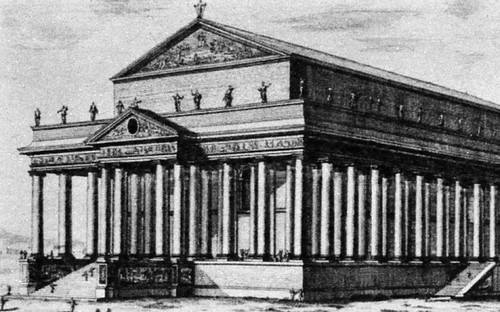Wednesday, May 31, 2017
Duterte on Carpio: Daldal nang daldal, wala namang ginawa noon
WEST PHL SEA ISSUE
Published May 31, 2017 8:27pm
By TRISHA MACAS, GMA News

President Rodrigo Duterte on Wednesday blasted Supreme Court Senior Associate Justice Antonio Carpio for egging his administration to strongly assert the country's claim over the West Philippine Sea amid efforts to improve relationship with China.
"Si Carpio, daldal nang daldal, p— ina, wala namang ginagawa noon. So, gusto niya punta ko doon sa UN (United Nations) for the enforcement," he said during the 119th anniversary of the Philippine Navy in Sasa Wharf, Davao City.
Carpio has suggested for the Philippine government to file a diplomatic protest against China for building islands in the disputed waters and over Chinese President Xi Jinping’s alleged threat of war during a meeting with Duterte.
To drive his point across, Duterte likened the maritime dispute to "usapang lalaki" (man-to-man talk).
"Ganito ‘yan. Usapang lalaki ‘yang away. Sabihin ko sa kanya, 'P— ina mo, umalis ka diyan, akin 'yan.' Sabihin niya, usapang lalaki. 'Eh p— ina mo, bakit ako aalis dito? Amin 'to.' Sabi, 'Umalis ka.' Sabi niya, 'Ayaw ko.' O anong gusto mo? Ganon 'yan. Ang sabi dialogue, peaceful resolution, when will it end? Hanggang kailan ako makikipag-usap?" he said.
He also stressed that he raised the Philippines' claim before Xi, but insisted that they could not agree on a middle ground.
"Itong mga bobo ng gobyerno, they keep on egging me sa arbitral ruling. Sinabi nila, ‘Anong ginagawa mo sa arbitral?’” he said, referring to the Permanent Court of Arbitration's ruling last year invalidating China’s expansive claims in the South China Sea.
“The arbitral ruling places the South China Sea in our jurisdiction. But the Chinese has insisted and has made well known their stand that it is theirs and they will die for it. At ngayon itong si Carpio para bang gusto niyang lugawin ko, that I will pursue the matter, tawagin ko ‘yung mga countries to help us,” he added.
Carpio was part of the delegation to the Permanent Court of Arbitration in The Hague that argued the country's case against China, which refused to honor the process as well as the ruling.
Duterte recalled anew his conversation with Xi, but clarified his supposed threat of war.
"'That is ours. I will dig oil there.’ And not in so many words, not really war but ‘yung diplomatic. And President Xi Jinping is very good at that. Ganoon na, ‘Huwag kasi kaibigan na tayo ngayon.’ In the raw translation, ‘Eh bakit lugawin mo pa? ‘Pag pumasok ka diyan magka-giyera pa tayo. There will be trouble'," he said.
"If you are an idiotic naïve, anong sabihin trouble? Eh ‘di trouble, ‘di giyera,” he added. —KBK, GMA News
http://www.gmanetwork.com/news/news/nation/612828/duterte-on-carpio-daldal-nang-daldal-wala-namang-ginawa-noon/story/?utm_source=GMANews&utm_medium=Facebook&utm_campaign=news
Former Pinoy dishwasher now owner of pizzeria in Italy
ITALY - In 1999, Marvin Aguda saw a bleak future in the Philippines and went to Italy to search for a greener pasture.
Just like other overseas Filipino workers, he had to work different jobs, from being a cleaner, caregiver and waiter.
In 2002, he worked as a dishwasher for a restaurant. He would clean tables and toilets, throw the trash and wash piles of plates and glasses.
“Ako, nagsimula din ako sa pinakamababang posisyon dito sa Italya. Nagtrabaho din ako sa bahay, nagsimula ako dito na ako ang naghuhugas ng pinggan, ako ang naglilinis dito ng banyo, ng lahat,” said Aguda.
Aguda was very observant. He watched the chef prepare different types of pizza and learned the process from kneading the dough, slicing the ingredients to garnishing in layered preparation.
When one of the owners died, his female boss who was the only one left to manage the business, decided to sell the restaurant. But because she didn't want anybody to take over, she considered Aguda’s offer of buying the place through a bank loan.
“Kailangan lang talaga dream big, kailangan mataas ang iyong pangarap sa buhay hindi yung laging hanggang doon na lang, hindi ko kaya yan, hindi pwedeng ganoon,” Aguda said.
Aguda was able to pay off the loan after two years and fast forward to today, he is the chef and owner of the same pizzeria he once cleaned.
Neighborhood pizzeria
In Italy, pizza reigns supreme as a staple food aside from a plate of pasta, other regional dishes and street food. They say the best recipe for pizza is an Italian recipe and who else can better prepare a truly
Italian pizza but the natives themselves. But more than a decade ago, Aguda made history by becoming the only Filipino pizzaiolo or pizza chef in Milan.
“I was thinking that the Italian people are the best in the world in making pizza but after I tried Filipino-[made], I changed my mind,” said Giovani Teoli a regular customer of Il Postino.
Il Postino is a busy little restaurant in the non-tourist district of Milan and here, pizza is considered a convivial and social food. The place gets crowded as natives and even tourists enjoy their conversations with pizzas folded wallet-style and a glass of beer.
It takes 10-15 minutes for Aguda to prepare pizza. He starts the assembly on his marble counter and cooks everything in a brick oven. Customers have nothing but praises for the delicious pizza and fast service. Aguda, together with his brother, make over 200 pizzas everyday.
There are a lot of pizzerias in the neighborhood but for Alessandro Clauti, Il Postino is his go to place for a quick take-away pizza.
“They’re able to make traditional pizza easy but also very good, plain but tasty,” he said.
Italians and Filipinos patronize Aguda’s high, large and stuffed pizza from the Margheritas, Four Cheese, Pepperoni to his version of Sisig Lechon Pizza. If there’s Filipino-style spaghetti, then there’s also Filipino-style pizza. A fusion of crunchy pork lechon on a margherita pizza. It started as a treat for his regular Filipino customers every Saturday. Aguda thought of offering it to his Italian customers and it was a hit too.
Dream big
Aguda’ perseverance and passion stand as proof that Filipinos grow wherever they’re planted. Though he sought for greener pasture, it didn’t come easy as he had to hurdle obstacles in a place far away from home.
According to Aguda, there is no overnight success but with his hard work and continuous effort in achieving his dreams despite difficulties and failure, he was able to transform his life.
http://news.abs-cbn.com/overseas/05/30/17/former-pinoy-dishwasher-now-owner-of-pizzeria-in-italy
Top 10 Wonders of the Ancient World
Here at the wonderslist, we love wonders, as much as, that we have produced several lists so far. We are now presenting our next ten wonders of the ancient world list. It is fortunate that the world is so full of wonderful things that we can keep you infotained with lists of this nature. If you wish to read the others, they are here:
10. Ajanta Caves, India
About 100km northeast from the city of Aurangabad, India’s Ajanta Caves are considered the pinnacle of Indian rock-cut architecture. The first Buddhist cave monuments at Ajanta date from the 2nd and 1st centuries BCE. During the 5th and 6th centuries A.D., many more richly decorated caves were added to the original group. British historian William Dalrymple named the Ajanta Caves “one of the great wonders of the ancient world”. See also; 10 Asian Caves Defining Human History and Development.
9. Newgrange, Ireland
Newgrange’s massive, rounded dome rises from the emerald plains of Ireland’s County Meath like a grass-topped UFO. Constructed during the Neolithic period around 3,200BCE, making it older than the Egyptian pyramids.
This ancient site consists of a large circular mound with a stone passageway and interior chambers. The mound has a retaining wall at the front and is ringed by engraved kerbstones. The site is storied in Irish folklore, there is no agreement about what the site was used for. It has been speculated that it had religious significance – it is aligned with the rising sun and its light floods the chamber on the winter solstice. It is considered one of the most important megalithic structures in Europe.
8. Derinkuyu, Turkey
The Derinkuyu is an ancient multi-level underground city in the Derinkuyu district in Nevşehir Province, Turkey. Extending to a depth of approximately 60 m (200 feet), it is large enough to have sheltered approximately 20,000 people together with their livestock and food stores. It is the largest excavated underground city in Turkey and is one of several underground complexes found across Cappadocia.
Built between the 7th and 8th Century BCE, the underground complex was built to defend against attacks from marauding armies. Though it was intended as a temporary shelter, its amenities were impressive: some 600 above-ground doors from which someone can enter the underground city from, 15,000 ventilation ducts to provide fresh air, as well as multiple wineries, cellars and a complex network of passages, tunnels, and corridors. (Source; BBC)
7. Lighthouse of Alexandria, Egypt
The world’s first lighthouse used mirrors to reflect sunlight for miles out to sea. It was built in third century BCE and stood 440 feet (134 metres) high. One of the Seven Wonders of the Ancient World, it was the tallest man-made structure after the pyramids of Giza and its light could be seen 35 miles out to sea. It was badly damaged by three earthquakes between AD 956 and 1323, it then became an abandoned ruin and, by AD 1480 after further damage by earthquakes, it was gone.
6. Colossus of Rhodes, Rhodes
A 110 feet tall statue honored the Greek sun god Helios, erected in the city of Rhodes, by Chares of Lindos in 280 BCE. One of the Seven Wonders of the Ancient World, it was constructed to celebrate Rhodes’ victory over the ruler of Cyprus. Before its destruction in the earthquake, the Colossus of Rhodes stood over 110 feet (33 metres) high, making it one of the tallest statues of the ancient world. According to the historian Strabo, it remained a popular tourist attraction even in ruin.
5. Mausoleum at Halicarnassus, Turkey
The Mausoleum at Halicarnassus was a tomb built in Fourth century BCE for the King Mausolus, and his sister-wife Artemisia II of Caria.
The Mausoleum was approximately 135 feet (41 metres) tall, and the four sides were adorned with sculptural reliefs. Mauslos and his wife chose Halicarnassus as their capital and devoted themselves to making it the most beautiful and impressive city in the world. In 353 BCE, Mausolus died, leaving Artemisia to rule alone. As a tribute to him, she decided to build him a tomb so famous that Mausolus’s name is now the eponym for all stately tombs, in the word mausoleum. The construction was also so beautiful and unique it became one of the Seven Wonders of the Ancient World. She died two years after him and her ashes were entombed with him in the building. It was destroyed by a series of earthquakes, from the 12th to the 15th century, and lay in ruin until it was completely dismantled by the Knights of St. John of Malta in 1494 CE.
4. Statue of Zeus, Greece
This 40 feet (12-meter) statue made by the Greek sculptor Phidias around 435 BCE, depicted the king of the Greek gods.
A sculpture of ivory plates and gold panels over a wooden framework, it represented the god Zeus seated on a throne with skin of ivory and robes of hammered gold. It’s also one of the Seven Wonders of the Ancient World, it was lost and destroyed destroyed at some point in an earthquake in the 5th or 6th centuries CE. with no copy ever being found, and details of its form are known only from ancient Greek descriptions and representations on coins.
3. Temple of Artemis at Ephesus, Turkey
Also known as the Temple of Diana, this towering temple was built in 550 BCE to honor Artemis, the Greek goddess of the hunt.
The temple is described by every ancient with awe and reverence for its beauty. It was 425 feet high, 225 feet wide, and supported by 127 60 foot columns. One of the Seven Wonders of the Ancient World, it was completely rebuilt three times before its eventual destruction in 356 BC by a man named Herostratus who set fire to the temple in order that his name be remembered.
2. Hanging Gardens of Babylon, Iraq
The Hanging Gardens were a distinctive feature of ancient Babylon. If they existed as described, were built by Nebuchadnezzar II about 600 BCE as a gift to his Median wife, Queen Amytis. The gardens are believed to have been a remarkable feat of engineering – an ascending series of tiered gardens containing all manner of trees, shrubs, and vines. They were destroyed by an earthquake sometime after the 1st century CE.
The Hanging Gardens of Babylon was one of the Seven Wonders of the Ancient World, and the only one of the wonders that may have been purely legendary. Legend has it that these gardens were said to have looked like a large green mountain constructed of mud bricks, but many experts say it never really existed.
1. Great Pyramid of Giza, Egypt
The Great Pyramid at Giza was constructed about 2,600 BCE for the Egyptian Pharaoh Khufu. It is the oldest and largest of the three pyramids in the El Giza, Egypt. It is the oldest of the Wonders of the Ancient World, and the only one still standing today. It was the structure itself with its perfect symmetry and imposing height which impressed ancient visitors. It was the tallest man-made structure in the world for almost 4,000 years.
5,000 MNLF fighters to help AFP
President Rodrigo Duterte has accepted the offer of Moro National Liberation Front chief Nur Misuari to deploy MNLF fighters in Marawi City and help the military defeat the Maute terror group. PPD/Albert Alcain, file
ZAMBOANGA CITY, Philippines – President Duterte has accepted the offer of Moro National Liberation Front chief Nur Misuari to deploy MNLF fighters in Marawi City and help the military defeat the Maute terror group.
During a visit to wounded soldiers in Jolo on Saturday, Duterte urged the Moro Islamic Liberation Front (MILF) and the New People’s Army (NPA) to do the same.
Duterte cited a letter that Misuari sent him, offering 5,000 MNLF fighters in the fight against the terrorists.
In the letter, Misuari said the Marawi incident is an opportunity for them to show their mettle in helping the President and the people restore peace in Mindanao, particularly in Marawi.
The President was considering a suggestion to enlist the MILF and MNLF fighters as well as the NPA in the fight against the Maute.
In return, the government will give the secessionist fighters and guerrillas pay and privileges similar to what the members of the Armed Forces of the Philippines (AFP) receive.
“I am announcing to all forces of the MI, MN, if this conflict will take long and if you want to join, cast your lot with the Republic… I will take you in as soldiers, same privileges, and I will build houses for you in some areas,” Duterte said.
He called on the NPA rebels to leave their leaders who are waging conflict at the expense of civilians, to leave the ranks and join forces with the military in fighting the Islamic State terrorists.
Duterte said the NPA rebels are being fooled by their leaders, whom he said are the ones benefitting from the revolutionary taxes that the guerrillas collect or extort from the people.
“I am going to create a new division for you. Wala ng qualification, tutal marunong naman kayo mag-baril (no more qualifications, anyway you know how to shoot). Practice na lang kayo ng kalabit. I am willing to take you in as soldiers of the Republic,” Duterte said.
AFP spokesman Restituto Padilla, however, said the recruitment of rebels into the military has to undergo some processes.
He said Duterte made the statement to stress the need to unite against a common threat, citing former rebels from the MNLF and the Cordillera People’s Liberation Army who had successfully integrated into the armed forces.
Drug lords
The President said the Marawi siege is financed by drug lords, who hide under the cover of the IS-influenced Maute group.
Duterte said drug lords support the operations of the terrorists, including arms supply.
He said the government has been overtaken by the scourge of the illegal drug trade in Marawi, and that the attack is not purely fueled by the IS.
He said the illegal drug trade is the root of the conflict, noting Marawi is a hotbed of methamphetamine hydrochloride or shabu and other illegal drugs in Mindanao.
He said the Maute brothers put up their own shabu laboratory in Marawi after learning that business for the so-called poor man’s cocaine is brisk in Metro Manila.
He said a raid conducted in the backyard of the house of the Mautes’ father was not reported in the media.
Duterte said Maute followers, who worked for some politicians, were lured by money and firearms.
The young Abu Sayyaf bandits, he said, were brainwashed by the so-called Islamic scholars and found their way to the IS and Maute group.
Duterte said he used to frequent Marawi and Iligan in his younger years. He said the problem of extremism at first was due to the growing sense of nationalism among Filipinos following the invasion of Spain in 1521.
The President said Christians and Muslims, who joined the illegal drug operations in the area, were pressured by the government’s anti-drug war. He said in a bid to get protection, these young men joined the Maute to pretend to fight for Islam.
“That’s what happened to the Visayans who got involved in the shabu operations. After they were pressured by the government anti-drug war, they proclaimed themselves jihadists in order to be protected by the group,” Duterte said.
He said it was one of the reasons there are a number of the so-called Islam converts or balik-Islam.
Duterte said criminal gangsters in Buldon town also joined the Maute group for protection.
He said the Maute brothers are into drug operations and pretending to be allied with the Islamic State because of the presence of Abu Sayyaf leader Isnilon Hapilon, who was anointed by IS as its leader in the Philippines.
“Iyan ang giyera ngayon. Actually, it started with drugs. And they were producing drugs halfway, not really to negosyo but to fund the terrorism kaya maraming armas (that’s why they are well armed),” Duterte said, noting that was the war now, drugs to buy arms to further terrorism. – With Perseus Echeminada, Alexis Romero
http://www.philstar.com/headlines/2017/05/30/1704931/5000-mnlf-fighters-help-afp
Tuesday, May 30, 2017
AGUIRRE TO TRILLANES: "PANAHON NA PARA SAMAHAN MO SI DELIMA SA BILANGGUAN"
Panibagong isyu na naman ngayon ang kinakaharap ni Senador Trillanes. Sa kabila ng kaliwa't kanang mga paratang sa kanya kailanman ay hindi ito inamin ng Senador. Sa halip ay itinanggi niya ito sa harap ng Media at publiko.
Karamihan sa mga paratang na patuloy na ibinabato sa Senador ay patukol sa kalakaran ng droga dito sa Pilipinas. May malaki raw kinalaman ang senador sa transaksyon ng droga dito sa Pilipinas. Ngunit sa di alam ng iilan sangkot din ang senador sa paggamit ng mg pundo ng gobyerno sa maling paraan.
Ito ngayon ang pinanghahawakang alas ni Justice Secretary Vitaliano Aguirre laban sa senador. Binalaan pa niya ito na maghanda na dahil malapit na daw nitong makasama ang kanyang napakalapit na kaibigan na si Senadora Leila De Lima sa loob ng kulungan.
Dagdag pa ni Aguirre may sapat na daw siyang edbidensiya upang maipatapon sa kulungan si Sen. Trillanes. Ngunit kahit ipinahayag na ito ni Aguirre todo tanggi pa rin ang senador sa mga paratang at sinabing wala siyang kinalaman sa kahit anong may kinalaman sa pagnanakaw sa kaban ng bayan.
https://www.philippinebalitadaily.com/2017/05/aguirre-to-trillanes-panahon-na-para.html
Watch: Journalist from New York City expose that LP was connived with US and CIA
An American journalist from New York City explained that the Liberal party was connived with the United States and its Central Intelligence Agency (CIA) to oust Philippine President Rodrigo Duterte.
She exposes that the Maute terrorism group was funded by the Liberal party and the plans was orchestrated prior to President Duterte's official visit in Russia to stop the negotiation between President Duterte and the Russian President Vladimir Putin.
She also elaborates the puppeteer behind the terrorism that was currently happening in Marawi City in Mindanao.
http://www.dailytopmedia.com/2017/05/watch-journalist-from-new-york-city.html
LOOK: Criminal and civil charges awaits Rappler's CEO Maria Ressa
After initiating the leakage of an unauthorized confidential Department of Foreign Affairs (DFA) document, Rappler's CEO Maria Ressa may face criminal and civil charges against the US and the Philippines according to former Presidential Assistant on Economic Affairs under Ramos administration, Mr. Jose Alejandrino.
The said document contains the telephone conversation between US President Donald Trump and Philippine President Rodrigo Duterte.
The conversation revolves around Trump's revelation of him sending two nuclear subs to Korea chichi caused the media to pillory Trump.
"She (referring to Ressa) could be charged under the US Espionage Act, like Julian Assange, founder of Wikileaks. That Act was designed to punish acts of interference in foreign relatons as well as acts of espionage that interfere with operations or success of the US armed forces or promote success of its enemies," claimed Alejandrino.
This is reinforced by the statement given by a former US Homeland Security offices now with the Heritage Foundation claiming that "If indicted by the US Attorney-General her (Ressa's) chances of being convicted are high. The US does not take this kind of offense lightly."
Alejandrino also cited that such "conviction is punishable by death or by imprisoment for not more than 30 years or both."
On the other hand, Alejandrino claimed that the Department of Foreign Affairs personnel who leaked the said confidential document to Ressa is not absolved from the offense and is hereby expected to face certain liabilities.
"Under Memorandum Circular No. 78 dated August 14, 1964 governing the security of classified material in Philippine government offices, Sec. IV, Art. 17 defines a confidential matter as information prejudicial to the interest or prestige of the nation or of great advantage to a foreign nation."
"Sec. XII, Art. 57 states that any violation of regulations in that Circular makes the public officer liable administratively without prejudice to any criminal prosecution if the violation constitutes an offense under the Revised Penal Code or any other penal law. Same with the unauthorized publication of classified material by the parties concerned," cited Alejandrino.
Alejandrino, who was a former General Manager at Manila Chronicle, concluded his post citing a very crucial Republic Act which reinforces Ressa's probable criminal offense committed against RA 10173 known as the Data Privacy Act of 2012.
"In the Philippines, RA10173 known as the Data Privacy of 2012 protects all forms of information that are personal, private, or privileged. Under its Sec. 32, any unauthorized disclosure without the consent of the data subject shall be subject to imprisonment ranging from one to three years and a fine of not less than 500,000 pesos but not more than one million."
Source: Jose Alejandrino
Ressa may face death penalty for Trump-Duterte top secret leakage
Founder and CEO of Rappler Maria Ressa may be charged under the United States Espionage Act for publishing unauthorized Department of Foreign Affairs (DFA) document on the confidential telephone call between US President Donald Trump and President Rodrigo Duterte about two nuclear submarines stationed in Korea.
Netizen Andrea Carigma posted an article by Jose Alejandrino about Ressa's illegal publication of a confidential document that could hold her accountable just like Wikileaks Founder Julian Assange.
Under the Espionage Act, a penalty of death or imprisonment of not more than 30 years or both is imposed on those who interfere or acts of espionage that interfere with the national security of the US.
Alejandrino cited the 1919 US Supreme Court case of Schne k vs. United States which rule the Espionage Act as non-violating the freedom of speech because it does not extend access to information on "diplomatic secrets and matters affecting national security."
The article also emphasized that the DFA official/s responsible for leaking the document should be held liable for her/his/their actions.
Alejandrino cited Memorandum Circular No, 78 dated August 14, 1964 governing the security of classified material in Philippine government offices and the Republic Act 10173 or Data Privacy Act of 2012 as laws that protect information which holds national security at stake.
In his Cargima's repost, Alejandrino said,
THE CASE OF MARIA RESSA
By Jose Alejandrino
Maria Ressa, CEO of Rappler, may be in trouble for leaking that unauthorized confidential DFA document on the telephone conversation between US president Donald Trump and Philippine president Rodrigo Duterte. In that conversation, Trump told Duterte confidentially there were two nuclear subs he sent to Korea and got pilloried for it by the US media.
She could be charged under the US Espionage Act, like Julian Assange, founder of Wikileaks. That Act was designed to punish acts of interference in foreign relations as well as acts of espionage that interfere with operations or success of the US armed forces or promote success of its enemies.
According to a former US Homeland Security officer now with the Heritage Foundation, it is immaterial that Ressa is a journalist or a non-US citizen or whether the individual distributing the confidential information is the initial thief or intermediary. If indicted by the US Attorney-General her chances of being convicted are high. The US does not take this kind of offense lightly.
A conviction is punishable by death or by imprisonment for not more than 30 years or both.
In 1919 the US Supreme Court unanimously ruled in Schenck vs United States that the Espionage Act did not violate freedom of speech. The right of access to information of public concern is not absolute. It does not extend to diplomatic secrets and matters affecting national security.
What about the liability of the DFA official who leaked the document? Under Memorandum Circular No.78 dated August 14, 1964 governing the security of classified material in Philippine government offices, Sec. IV, Art.17 defines a confidential matter as information prejudicial to the interest or prestige of the nation or of great advantage to a foreign nation. Sec. XII, Art.57 states that any violation of regulations in that Circular makes the public officer liable administratively without prejudice to any criminal prosecution if the violation constitutes an offense under the Revised Penal Code or any other penal law. Same with the unauthorized publication of classified material by the parties concerned.
In the Philippines, RA10173 known as the Data Privacy Act of 2012 protects all forms of information that are personal, private, or privileged. Under its Sec.32, any unauthorized disclosure without the consent of the data subject shall be subject to imprisonment ranging from one to three years and a fine of not less than 500,000 pesos but not more than one million. Under its Sec.36, any offense committed by a public officer carries an accessory penalty consisting in his disqualification to hold public office for a term double the term of the criminal penalty imposed.
http://www.newsinfolearn.com/2017/05/ressa-may-face-death-penalty-for-trump.html
Rappler sabotaged our Republic
BY SASS ROGANDO SASOT ON MAY 30, 2017
http://www.manilatimes.net/rappler-sabotaged-republic/329990/
“IF there is wrongdoing affecting the public interest, regardless of any relationship, we release to the public,” Maria Ressa, Rappler’s CEO, said on her blog “Brave New World” as she reflected on the ethics of releasing confidential documents (“Wikileaks: More and more of less and less,” December 20, 2010).
This month, Ressa discarded this laudable stance as Rappler collaborated with The Intercept, a foreign online news site funded also by their investor, in releasing confidential documents leaked by saboteurs in the Department of Foreign Affairs (DFA). The documents contain the transcripts of the phone conversation between US President Donald Trump and President Rodrigo Duterte on April 29, 2017. A typical conversation between two allies, mulling over a common threat.
On May 25, 2017, in her Facebook account, Chay Hofileña, the head of Rappler’s investigative desk, addressed the flak that Rappler had been getting by drawing comparisons with the release of the top-secret Pentagon Papers in the 1970s. Daniel Ellsberg, the US military analyst who leaked them, said those papers “demonstrated unconstitutional behavior.” Hofileña hasn’t established any analogous unconstitutional acts committed by Duterte. To use what Ressa said about the US diplomatic cables that Wikileaks released, the transcripts are “a far cry from the Pentagon Papers in terms of exposing wrongdoing.”
In her FB account, Ressa, said that “the transcripts show that both presidents said something privately that differ from their public positions.” Yet she hasn’t demonstrated how those differences warranted breaching the confidentiality of presidential communications.
In United States vs. Nixon (1974), the US Supreme Court compelled President Richard Nixon to release certain tapes and papers that could criminally implicate him. Nixon objected by appealing to executive privilege. The Supreme Court disagreed, arguing that executive privilege “must yield to the demonstrated, specific need for evidence in a pending criminal trial.” If the interest of justice isn’t at stake, it is “in the public interest to afford presidential confidentiality the greatest protection consistent with the fair administration of justice.” And that protection extends “to idle conversations with associates in which casual reference might be made concerning political leaders within the country or foreign statesmen.”
There’s nothing inappropriate, scandalous, or felonious in the DFA confidential documents. Even using Ressa’s own ethical framework, Rappler has no legitimate reason that could absolve them and the leaker from any criminal liability or that could vindicate them historically.
Let’s entertain Rappler’s motivations for co-publishing those illegally acquired documents. Perhaps some compelling public interests might overpower “the public interest to afford presidential confidentiality the greatest protection.”
On May 24, 2017, Rappler’s investigative team identified three “differences” between Duterte’s public and private positions.
First, while Duterte encouraged North Korea and the US to “show restraint;” in his conversation with Trump, he urged him to “keep the pressure on [Kim Jung-un].” Those two aren’t incompatible nor against the official position of the Association of Southeast Asian Nations (Asean) on the matter. Asean encourages both parties to show restraint, while at the same time pressures North Korea to obey United Nations Security Council (UNSC) resolutions. What’s wrong about Duterte telling the US, one of the permanent members of the UNSC, to continue that pressure?
Second, Rappler found issue with Duterte telling the public that it was Trump who told him to call Xi Jinping to help manage the crisis. The transcript showed that Duterte volunteered that idea. Trump said: “Please call China and tell them we are all counting on China.” Is there anything morally, legally, diplomatically, and strategically wrong with what Duterte did? It was a diplomatic class act! Instead of being a braggart about his idea, Duterte made the US look like a power still willing to find diplomatic and political solutions to the Korean Peninsula crisis. Yet instead of looking at the strategic value of what Duterte did, Rappler chose to demonize him.
And third, Rappler pointed out that while Duterte “curses at the US in public,” on behalf of Asean, he still expressed support for “US intervention in the Korean Peninsula crisis.” International relations isn’t an all or nothing affair. That Duterte harshly pans certain aspects of US foreign policies doesn’t mean that he couldn’t recognize the difference the US could make in other areas, including the Korean Peninsula crisis. After all, the US is an important player in that issue, as it’s one of the members of the Six-Party Talks, meant to address security concerns on North Korea’s nuclear capabilities.
In her FB post, Ressa mentioned the need to expose something that “is being kept secret at the public’s expense or to manipulate the public.”
In his speech during the 27th Philippine Orthopaedic Association mid-year convention on May 4, 2017, Duterte already divulged some parts of his conversation with Trump. He even said that he’d “be happy to make it public.” But he has “to tell the White House that [he’s] going to,” which is necessary. That’s not the behavior of a President who wants to hoodwink people and betray the public’s trust. Why did Rappler take the illegal route if Duterte already opened a possible legal path to divulge the conversation?
Without demonstrably satisfying any compelling public interest, Rappler and the leaker accomplished only one thing: thoroughly damage our government’s reputation concerning its ability to safeguard the confidentiality of high-level diplomatic communications. Other leaders will now surely hesitate to have frank conversations with our leaders. We cannot let Rappler and the leaker do this to our Republic.
Trillanes accuses Aguirre of 'fabricating' testimonies to harass opposition
'PORK' SCAM
Published May 29, 2017 9:33am
By KATHRINA CHARMAINE ALVAREZ, GMA News
Senator Antonio Trillanes IV on Monday denied that he misused government funds after Justice Secretary Vitaliano Aguirre II said the opposition senator will soon face charges over the multi-billion pork barrel scam.
"I categorically deny any involvement in any irregularity regarding PDAF, DAP or any government funds, for that matter," Trillanes said in a text message to reporters.
Trillanes was referring to the priority development assistance funds (PDAF) or pork barrel funds allocated to congressmen and senators until it was ruled as unconstitutional by the Supreme Court in 2013, and the Disbursement Acceleration Program (DAP), a spending program during the Aquino administration.
"I was never even mentioned in any of the so-called Napoles lists provided during the height of the investigations in 2013," Trillanes said.
Trillanes, a staunch critic of President Rodrigo Duterte, said Aguirre is behind the supposed charges to be filed by alleged pork scam queen Janet Lim-Napoles.
"Aguirre has been using his office to persecute and harass members of the opposition by fabricating testimonies from dubious convicts or detainees such as the Bilibid drug lords, Kerwin Espinosa and now Napoles," he said.
In a television interview, Aguirre said Trillanes, along with Senator Leila de Lima, and former budget secretary Florencio Abad will soon face charges over the PDAF scam.
The Justice secretary said the charges will be filed by Napoles.
De Lima earlier said that the Duterte administration will likely enter a deal with Napoles to “blackmail and threaten” the President's political foes.
Napoles was earlier acquitted by the Court of Appeals in the serious illegal detention case filed against her by her former aide, Benhur Luy. —ALG, GMA News
http://www.gmanetwork.com/news/news/nation/612466/trillanes-accuses-aguirre-of-fabricating-testimonies-to-harass-opposition/story/?utm_source=GMANews&utm_medium=Facebook&utm_campaign=news
